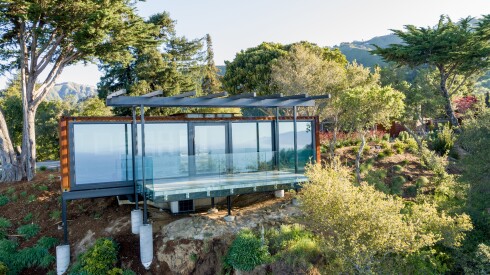With seven months to go until the Tokyo 2020 Olympics, Japan’s new national stadium—which will host the opening and closing ceremonies, as well as track and field and soccer events—is officially complete.
Formally unveiled at a ceremony on Sunday, December 15, the 68,000-seat venue replaces the existing national stadium in Meijijingu Gaien park that was built for the 1964 Tokyo Summer Olympics and demolished in 2015. The new stadium is double the old structure’s size.
Designed by the renowned Japanese architect Kengo Kuma—who is also known for his work on the V&A Dundee in Scotland—the new national stadium draws inspiration from nature and from Japan’s Edo-period temples.

The new national stadium is located in Tokyo’s Meijijingu Gaien park.
Photo by yu_arakawa / Shutterstock
The stadium is mostly made out of wood that Kuma sourced from each of Japan’s 47 prefectures. It also features an “open” design with a half-covered roof that allows air to easily circulate, since temperatures in Tokyo can reach into the 80s and 90s during the summer. Open-air columns at the stadium reference the Gojunoto pagoda at Horyuji Temple, a UNESCO World Heritage site, considered to be the oldest wooden building in the world.
“The Olympics always becomes a symbol for the era, so with the 2020 Olympics, we wanted to create something that captures the people’s thoughts on the environment or the Earth at the time,” Kuma told CNN. “So, we thought that the best material for this era would be wood.”
On the stadium’s fifth level, there’s also an open-air walkway—complete with benches, flowers, and trees—that wraps around the stadium. The “Grove of the Sky” will offer views of the city and even Mount Fuji on a clear day. While the country’s soccer and rugby teams will call the stadium home after the Olympics, there are plans to keep the “Grove of the Sky” open to the public even when there aren’t any games scheduled.
>>Next: Tokyo’s Long Lines Lead to Magic (and Life-Changing Ramen)








